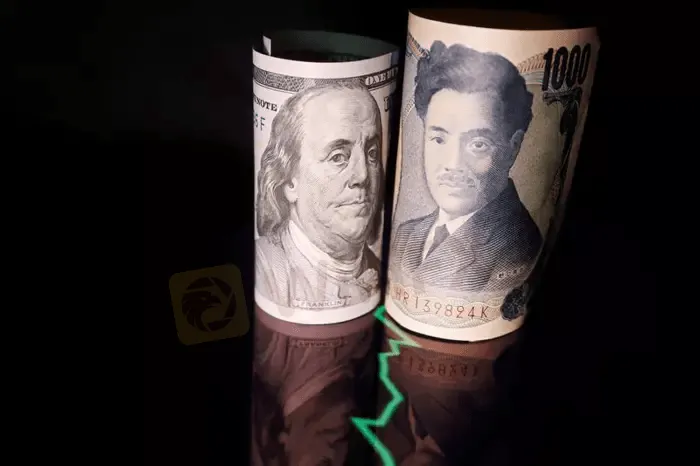简体中文
繁體中文
English
Pусский
日本語
ภาษาไทย
Tiếng Việt
Bahasa Indonesia
Español
हिन्दी
Filippiiniläinen
Français
Deutsch
Português
Türkçe
한국어
العربية
Yen recovery continues on lower U.S. yields; markets on edge over Pelosi
Abstract:The dollar continued its decline on Tuesday, falling to its lowest in two months against the recovering Japanese yen and losing ground on other peers, as investors continued to position for a less aggressive pace of Federal Reserve interest rate hikes.

Jitters about the impact of an impending visit to Taiwan by U.S. House of Representatives Speaker Nancy Pelosi were also driving some safe-haven flows to the yen, while weighing on other Asian currencies.
The greenback fell as low as 130.595 yen in early trading, its lowest since June 6, and was last down 0.55%, leaving it down 4% in the past four sessions.
“Its the same old story with the yen being very sensitive to the gap between U.S. and Japanese government bond yields. Of course Japanese ones aren‘t moving because of Japan’s yield curve control policy, but U.S. yields have dropped a lot,” said Redmond Wong, market strategist at Saxo Markets Hong Kong
The benchmark 10-year Treasury yield fell to 2.53%, its lowest since April, in early trade on Tuesday. Investors are beginning to position themselves for the U.S. Federal Reserve to pivot away from raising interest rates aggressively to combat inflation and towards worrying more about an economic slowdown. {US/]
Wong, who said this repricing of expectations for Fed rate hikes was probably overdone, added that somewhat lower energy prices were also helping the yen, since Japan was a net importer of energy. The currency was also benefiting from some safe-haven flows due to worries about Pelosis visit.
China‘s offshore yuan touched 6.7957 per dollar on Tuesday, its weakest since mid-May. Wong attributed this partly to the tensions around Pelosi’s visit as well as poor economic data from China over the weekend.
The Taiwan dollar slipped to its lowest levels in more than two years, falling past 30 per U.S. dollar.
The greenback was also weaker generally, with sterling at $1.2256, just off a five-week peak hit overnight, and the euro was also on the front foot at $1.0294.
This sent the dollar index, which measures the greenback against six peers, to 105.03 in early trade, a one-month low.
Elsewhere, the Australian dollar was holding just above $0.7 ahead of a central bank meeting at which analysts are expecting a third consecutive half-point interest rate increase.
Bitcoin was steady at $23,250.

Disclaimer:
The views in this article only represent the author's personal views, and do not constitute investment advice on this platform. This platform does not guarantee the accuracy, completeness and timeliness of the information in the article, and will not be liable for any loss caused by the use of or reliance on the information in the article.
Read more

5 Risks associated with Grand Capital
You can avoid fraud, crypto scams, and similar traps simply by staying informed. If you regularly follow forex news, there’s a lower chance that you’ll fall victim to such scams. Being aware is the only way to stay safe. That’s why you also need to know about the Grand Capital broker and why it should avoided.

Exposed: Ibell Markets - A Scam Broker That Does Not Allow Withdrawals
Ibell Markets adds to the infamous list of scam brokers who think about acquiring customers and their investments. But what about the withdrawal? Do they allow? Read this to find out.

Avoid Trendify: 5 Red Flags Revealed
Trendify is nothing more than a scam broker. It is one of those forex brokers that acts genuine but is actually full of red flags. Before you invest and fall victim to its investment scam, its better to check out the risks involved with Trendify.

Forex Interbank Rate & How It Influences Your Trading
A forex interbank rate is nothing but the wholesale currency exchange rate that banks and other major financial institutions use to trade currencies among themselves. Read more about it.
WikiFX Broker
Latest News
Forex Hedging: Is It a Trader’s Safety Net or Just an Illusion?
OPEC+ members agree larger-than-expected oil production hike in August
Top Wall Street analysts are pounding the table on these 3 stocks
Stock futures fall after Trump team says tariffs will go into effect on Aug. 1: Live updates
FCA clarifies expectations on bullying, harassment and violence to deepen trust in financial service
Asia-Pacific markets mixed after Trump shifts goalposts on tariffs again
XS.com Expands Global Reach with Landmark Kuwait Launch
European markets set to open mixed amid fresh U.S. tariff threats
America's Deficit Reckoning: How the U.S. debt spiral could spark a crisis
Treasury yields hold steady as Trump extends tariff deadline
Currency Calculator


